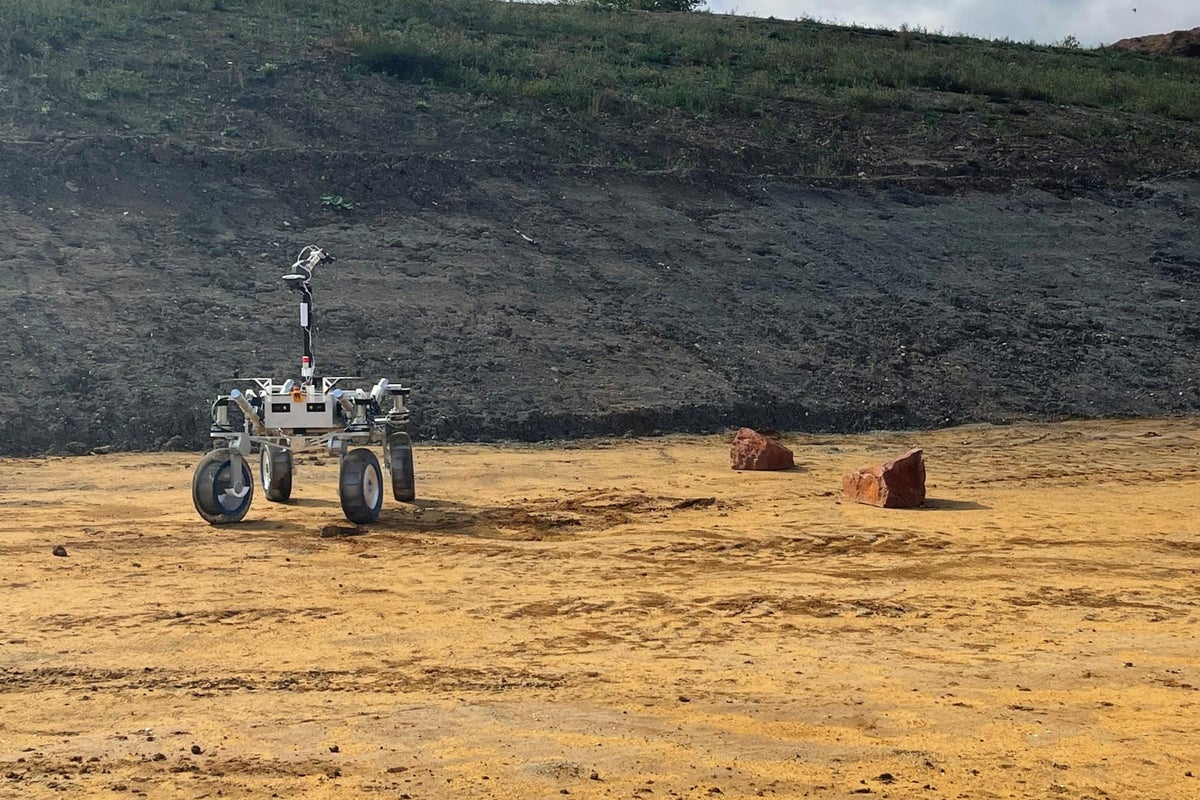Planetary rover destined for moon or Mars tested in Milton Keynes quarry

A planetary rover potentially destined for missions on the moon or Mars has been put through its paces at a quarry in Milton Keynes.
The Sample Fetch Rover (SFR), affectionately known as Anon, was intended to collect sample tubes left on the surface of Mars by Perseverance.
But earlier this year Nasa and the European Space Agency (ESA) announced the rover would no longer be needed for this work, as Perseverance – which landed on the red planet in February 2021 – is already collecting samples from the planet.
However, Airbus engineers who have been working on the SFR since 2018 are still putting the machine through its paces.
Even though the mission may have faded away, the core technology is still ready and able to go and this is the kind of the final step in proving that it works
Ben Dobke, Airbus project manager
Quarry testing is essential to the development process, providing a unique and dynamic landscape that cannot be replicated within the Mars Yard test facility at Stevenage, and the event marks the first time all the rover’s systems are being tested simultaneously.
Airbus is looking to ensure this surface mobility capability, that could also be used on the moon, is maintained for the UK space sector.
Ben Dobke, project manager at Airbus, said: “Even though the mission may have faded away, the core technology is still ready and able to go and this is the kind of the final step in proving that it works.
“With the Artemis programme happening at the end of the decade, the focus has started shifting towards the moon.
“So any rovers or autonomous vehicles on the moon, this software can certainly be applied to that in the future.”
In order for the rover to be used on future moon missions, engineers will have to reconsider temperatures on the lunar surface, and how to keep key components functioning in the lack of atmosphere.
They will also have to look into how the SFR is powered up after spending 14 nights essentially in sleep mode because of the cold temperatures when it is in darkness.
The SFR prototype has four wheels – unlike the six-wheeled ExoMars rover – and is designed to operate six times faster than ExoMars.
This involves greatly enhanced autonomous navigation capability, the engineers say.
However, aside from potentially being used for future moon missions, experts suggest the SFR’s technology could be useful for a number of different purposes, including building habitats on the moon.
Mr Dobke said: “There’s various avenues of investigation so it could be scientific, going into places where there’s lunar ice.
“It could be in support of human habitats, whether it be autonomously building habitats or whether it’s supporting driving astronauts around on the surface.
“So there’s a number of different applications that we could have autonomy on the moon.”
However, a possible focus on moon missions does not mean all hope is lost for the SFR visiting Mars.
Dr Adam Camilletti, space systems lead at the UK Space Agency, said: “All the technology that’s been developed for Sample Fetch Rover is still really, really useful because we’ve developed a huge amount of expertise and know-how in the UK.
“And we think that can be utilised in commercial applications, for autonomous vehicles and inspecting infrastructure and down tunnels and in difficult terrains, but also we think it can be utilised in future missions, perhaps to the moon and future missions to Mars as well.”
For all the latest Science News Click Here
For the latest news and updates, follow us on Google News.

